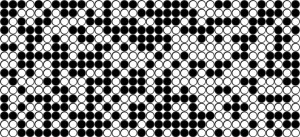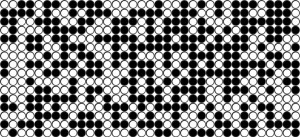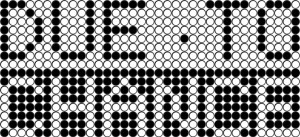Paul Giem provides the following guest post today:
The following three pictures were made to represent trays with 560 coins with either white (heads) or black (tails) showing. At least one of them was created by shaking coins and then spreading them out on a table (actually multiple shakes of 20 or so coins) and copying the pattern of heads and tails produced. Which one or ones are they, and why? Were the ones, if any, that were not done by this process designed, and if so by whom, and using what method?
1.
2.
3.


